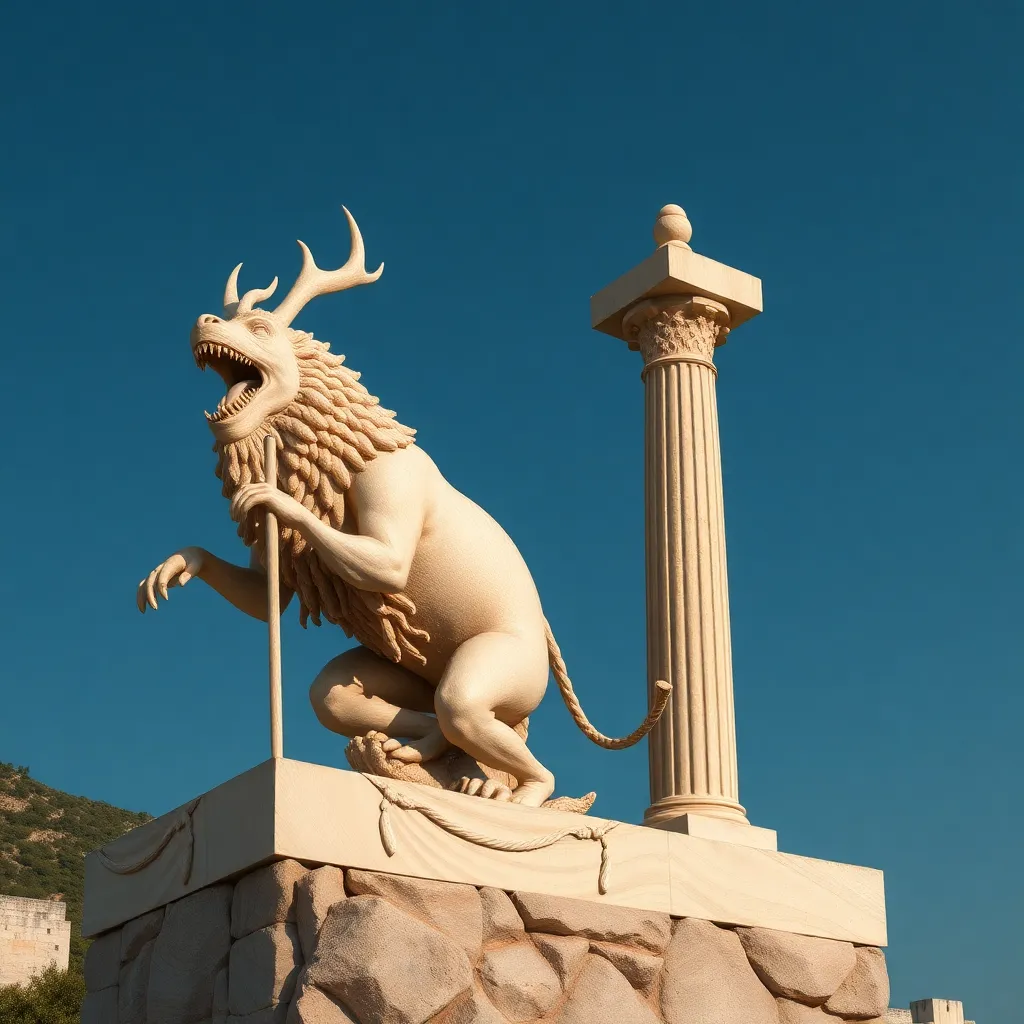The Role of Mythological Creatures in Greek Political Satire
I. Introduction
Political satire has been a powerful tool for social commentary throughout history, and ancient Greece was no exception. It served as a means to critique political leaders, societal norms, and contemporary issues through humor and wit. In this rich tapestry of expression, mythological creatures played a significant role, often acting as symbols that conveyed deeper meanings.
This article explores the intersection of Greek mythology and political satire, examining how mythological creatures were employed to reflect societal critiques and the political landscape of the time.
II. Historical Context of Greek Political Satire
The roots of political satire in ancient Greece can be traced back to the 5th century BCE, during a time of great political turmoil and change. As democracy began to take hold in Athens, the theatrical arts flourished, giving rise to playwrights who cleverly used satire to address pressing political and social issues.
Key figures in the field of political satire included:
- Aristophanes: Often hailed as the father of political satire, his plays utilized humor to critique Athenian society and its leaders.
- Euripides: Though primarily known for tragedy, he incorporated satirical elements that challenged societal norms.
Through their works, these playwrights tackled various socio-political issues, such as war, gender roles, and the morality of leaders, using satire as a vehicle for commentary.
III. Mythological Creatures as Symbolic Figures
In Greek mythology, creatures such as Satyrs, Centaurs, and Nymphs were not merely fantastical beings; they bore significant symbolic weight. These mythological creatures often represented various aspects of human nature and societal archetypes.
Some common mythological creatures used in satire include:
- Satyrs: Representing hedonism and chaos, they often highlighted the absurdity of excess in society.
- Centaurs: As half-human, half-horse beings, they embodied the struggle between civilization and barbarism.
These symbols related directly to political themes, such as the conflict between rationality and irrationality, order and chaos, reflecting the complexities of human behavior and governance.
IV. Case Studies of Satirical Works Featuring Mythological Creatures
Analyzing specific plays provides insight into how mythological creatures advanced the plot and enriched the satire.
For instance:
- “The Clouds”: In this play, Aristophanes uses the character of Socrates and a chorus of clouds to critique the sophists and the evolving educational systems, portraying the absurdity of philosophical thought disconnected from practical reality.
- “Lysistrata”: This work features women withholding sex from their husbands as a form of protest against war, using mythological elements to emphasize gender dynamics and the folly of male leadership.
These representations not only entertained but also provoked thought, resonating with audiences who recognized the underlying truths in the absurdity portrayed.
V. The Function of Humor and Absurdity
Humor is an essential component of political critique, allowing playwrights to address serious themes in an accessible manner. The absurdity of mythological creatures served as a potent tool for satire, enabling audiences to engage with complex ideas without feeling threatened.
The reception of this humor varied, but it often facilitated a deeper understanding of the political landscape. Audiences were encouraged to reflect on the follies of their leaders and society while laughing at the exaggerated portrayals of mythological beings.
VI. The Dual Nature of Mythological Creatures
Mythological creatures in Greek satire often embodied both chaos and order. They served as mirrors reflecting the duality of human nature—capable of both great wisdom and foolishness.
Through satire, these creatures explored moral lessons, illustrating the consequences of human actions and societal choices. The complexity of their characterizations allowed for a rich exploration of themes such as:
- The struggle between reason and passion
- The conflict between individual desires and societal expectations
This duality made mythological beings relatable, even as they highlighted the absurdity of human nature.
VII. Legacy of Mythological Creatures in Modern Political Satire
The influence of Greek political satire, particularly the use of mythological creatures, extends into modern literature and media. Contemporary political satire often draws parallels with ancient themes, utilizing similar symbols to critique current events.
Examples include:
- Cartoons that use creatures like satyrs to comment on political corruption.
- Literary works that reference mythological figures to illustrate modern societal issues.
The enduring relevance of these mythological creatures in political discourse highlights their ability to transcend time, offering insights into the human condition and societal structures.
VIII. Conclusion
In conclusion, mythological creatures played a crucial role in Greek political satire, serving as symbolic figures that enriched the narrative and provided profound social commentary. Through the lens of humor and absurdity, these creatures allowed playwrights to critique political leaders and societal norms effectively.
Reflecting on the importance of satire in political commentary, it is evident that the lessons from ancient Greece remain relevant today. The lasting impact of mythological figures in society continues to inspire modern discourse, proving that the intersection of mythology and satire is a timeless aspect of human expression.




